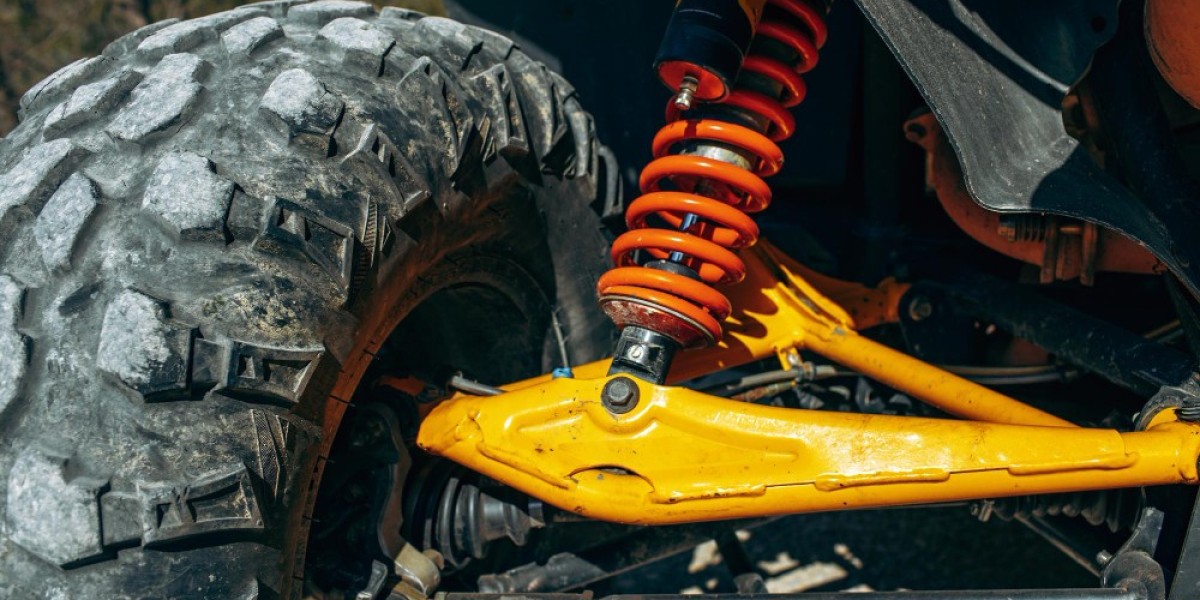When it comes to owning a Jeep, one of the most exciting aspects is customizing your vehicle to fit your specific needs and preferences. Whether you’re a weekend off-roader or someone who enjoys daily driving in style, selecting the right Jeep parts can make all the difference in your vehicle’s performance, comfort, and overall look. In this guide, we will explore the process of choosing the right Jeep parts to ensure your vehicle is ready for any adventure.
1. Understand Your Jeep's Needs
Before diving into the world of Jeep parts, it’s essential to understand your vehicle’s specific requirements. Every Jeep model is unique, so the parts you choose should align with the type of driving you do and the modifications you want to make.
Off-Roading Needs: If you’re a dedicated off-roader, your Jeep parts will need to be durable and built to withstand harsh conditions. Parts like heavy-duty suspension systems, skid plates, and off-road tires are crucial for tackling rough terrain.
Daily Driving: For those who use their Jeep primarily for daily driving, comfort and fuel efficiency might be a priority. Parts like upgraded seats, air filters, and quality brake pads can improve the driving experience.
Aesthetic Modifications: Jeep owners often love customizing their vehicle’s look. From stylish bumpers and grilles to custom rims and lighting, there’s no shortage of parts to enhance the aesthetics of your Jeep.
Knowing the purpose of your modifications will help you select Jeep parts that are best suited for your needs.
2. Prioritize Quality and Durability
When choosing Jeep parts, quality is of utmost importance. A Jeep is designed for tough terrain, and the parts you select should be able to handle the wear and tear that comes with off-roading or long-term driving. Cheap or low-quality parts may save you money initially, but they can fail prematurely and lead to costly repairs.
OEM vs. Aftermarket Parts: Original Equipment Manufacturer (OEM) parts are designed by the manufacturer and ensure perfect compatibility with your Jeep. However, aftermarket parts offer more variety and can often provide better performance or aesthetics. When choosing aftermarket parts, make sure to research reputable brands known for their durability and reliability.
Material Quality: Jeep parts are made from various materials like steel, aluminum, and plastic. Ensure that the materials used in your parts can stand up to the elements, whether it’s mud, water, or extreme heat. For example, heavy-duty suspension parts made from high-strength steel are more durable than stock options.
3. Focus on Performance Enhancements
If you’re looking to enhance your Jeep’s performance, there are several key areas to focus on when choosing parts. From improving off-road capability to boosting engine power, the right performance parts can take your Jeep to the next level.
Suspension System: A high-quality suspension system is crucial for off-roading. Upgrading to a heavy-duty suspension system with larger shocks and springs will give your Jeep better clearance, allowing it to tackle obstacles more effectively.
Tires and Wheels: Your tires are one of the most important Jeep parts for off-roading. Off-road tires with aggressive tread patterns provide better traction on mud, rocks, and sand. Don’t forget about the wheels – lightweight alloy wheels are often preferred for better performance and fuel efficiency.
Air Intake and Exhaust Systems: Upgrading your Jeep’s air intake and exhaust systems can lead to improved engine performance and better fuel efficiency. Cold air intakes increase airflow to the engine, while aftermarket exhaust systems enhance exhaust flow and provide a more aggressive sound.
Lockers and Differentials: For serious off-road enthusiasts, lockers and differentials are key components. These parts improve traction and help distribute power more effectively across all four wheels, allowing your Jeep to tackle even the toughest trails.
4. Consider Ease of Installation
One of the great things about Jeep parts is that many of them are designed for easy installation, especially for those who enjoy working on their vehicles. However, some parts may require professional installation, depending on your mechanical expertise.
DIY-Friendly Parts: If you’re an avid DIYer, look for Jeep parts that come with detailed instructions and can be installed with basic tools. Common DIY upgrades include air filters, light bars, bumpers, and seat covers.
Professional Installation: More complex parts, such as suspension systems, performance engine components, and drivetrain modifications, may require professional installation. It’s important to consider the cost and time needed for installation before purchasing parts.
5. Compatibility with Your Jeep Model
Jeep models differ greatly, so it’s vital to choose parts that are compatible with your specific vehicle. Whether you drive a Wrangler, Cherokee, Gladiator, or Grand Cherokee, parts are often designed specifically for each model, so be sure to check the fitment before making a purchase.
Lift Kits: If you’re planning to lift your Jeep, make sure the lift kit is compatible with your model and the size of tires you want to install. A 2-inch lift on a Wrangler may work differently than on a Cherokee, so always double-check compatibility.
Lighting and Accessories: From LED light bars to roof racks, many Jeep accessories are designed with specific models in mind. Choose accessories that match the aesthetics and functionality of your Jeep.
6. Budget Considerations
When selecting Jeep parts, your budget is an important factor. Jeep parts come in a wide price range, and while it can be tempting to choose cheaper options, remember that quality and durability are key.
Set a Budget: Before you start shopping, set a realistic budget for your upgrades. Consider prioritizing essential performance parts first, like tires, suspension, and brakes. Aesthetic upgrades can be added later as your budget allows.
Balance Cost and Quality: It’s often better to invest in high-quality parts that will last longer, rather than choosing cheaper options that may need to be replaced sooner. Quality parts can actually save you money in the long run by reducing maintenance costs and improving performance.
7. Read Reviews and Do Research
With countless brands and parts available on the market, it’s crucial to do your research before making a purchase. Look for reviews from other Jeep owners to see what has worked well for them. Online forums, social media groups, and product review websites are excellent resources for gathering opinions and insights from the Jeep community.
Customer Feedback: Pay attention to customer feedback, especially when it comes to reliability and performance. Positive reviews can give you confidence in the quality of the parts you’re purchasing.
Brand Reputation: Some Jeep parts manufacturers have a reputation for producing top-tier products, while others may be known for low-quality parts. Stick to well-established brands with good reputations to ensure you’re getting the best.
8. Long-Term Value
Choosing the right Jeep parts isn’t just about immediate performance; you should also consider the long-term value of your investment. High-quality Jeep parts can enhance the resale value of your vehicle, while low-quality parts may decrease it.
Maintaining Value: Customizing your Jeep with high-quality parts can make it more attractive to potential buyers if you decide to sell it down the road. Choose parts that add both performance and style while maintaining your vehicle’s value.
Conclusion
Selecting the right Jeep parts is crucial to getting the most out of your vehicle, whether you’re enhancing performance, improving comfort, or adding a personal touch. By understanding your needs, focusing on quality, and ensuring compatibility, you can make informed decisions that will ensure your Jeep is ready for any adventure. Take the time to do your research, and always prioritize parts that provide long-term value and durability.
When you choose the right Jeep parts, you’ll be setting your vehicle up for success on and off the road, ensuring that your Jeep performs at its best for years to come.









